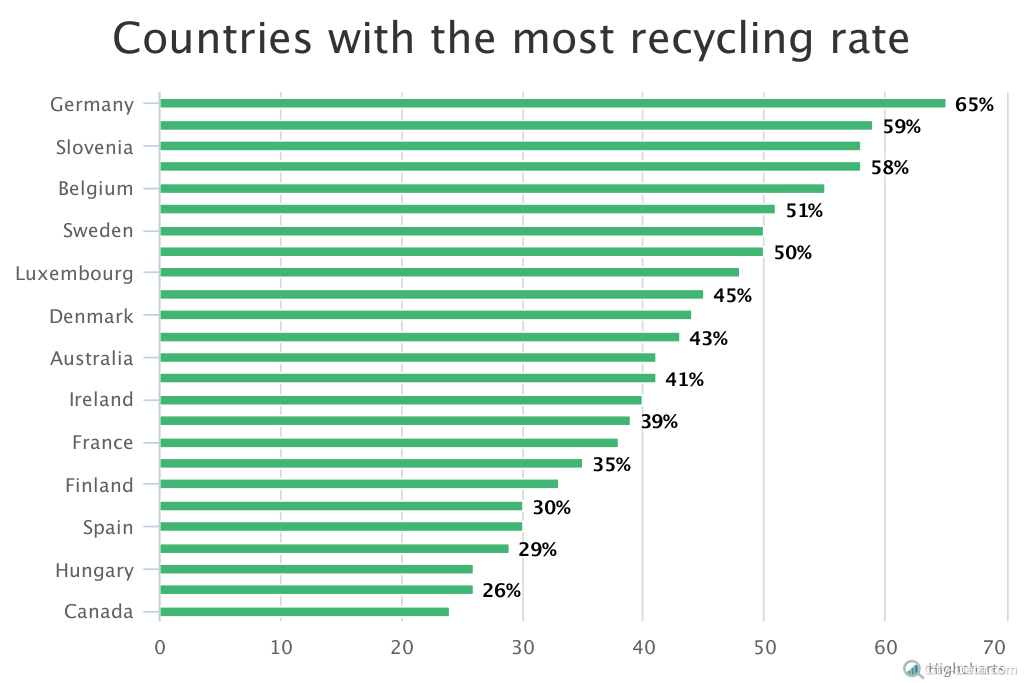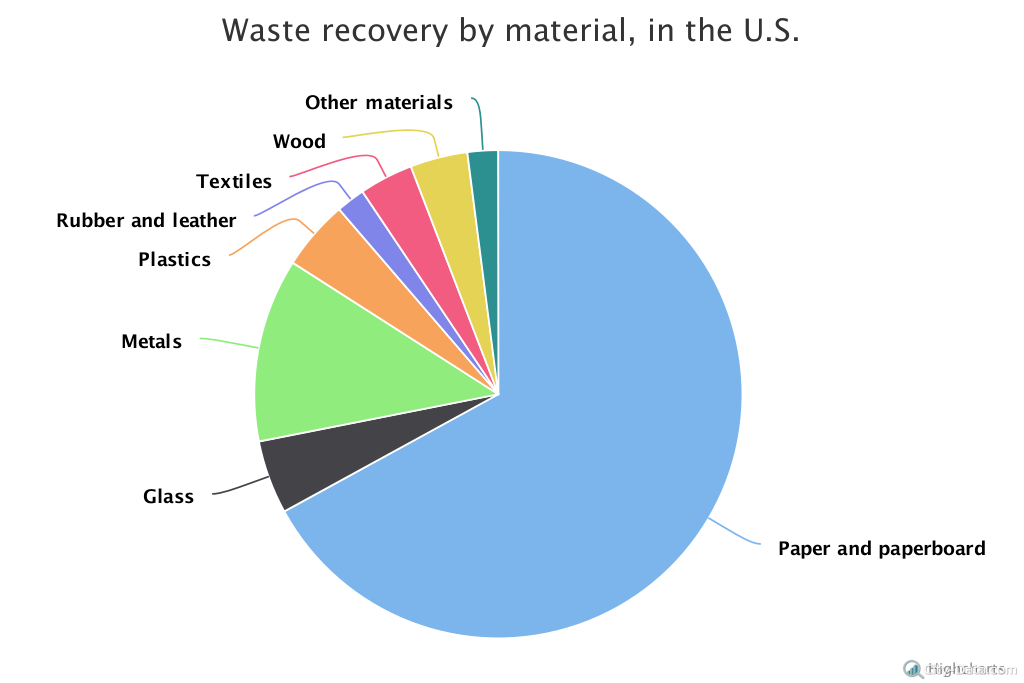Pavel Prikhodko, Ph.D. Machine Learning
According to information published by the United States Environmental Protection Agency, American people generated about 254 million tons of trash and recycled around 87 million tons of material in 2013. In terms of actively recycling and composting waste, the United States falls far behind other countries. The U.S. recycles about 35 percent of all its municipal waste. Germany leads the world in this regard, composting or recycling 65 percent of all its municipal waste. South Korea takes second place with a recycling rate of 59 percent.

In 2013, about 67 percent of newspaper and mechanical paper and about 60 percent of yard trimmings were recovered in the U.S. The most-recovered material in the country was paper and paperboard – over 43,000 tons were recovered from municipal solid waste. Approximately 8,000 tons of metal were recovered from municipal solid waste. Glass and plastics were also recovered in huge quantities: 3,150 tons and 3,000 tons respectively. The amount of wood recovered from solid waste was about 2,400 tons, compared to textiles with 2,300 tons recovered. Rubber/leather showed a much lower recoverable rate – only 1,200 tons in 2013.

We can also analyze the information about solid waste generation and discards in the United States. Thus, in 2013, more than 254 million tons of municipal solid waste was generated, and about 166 million tons of it was discarded. In 2012 the rates were pretty similar: 250 million tons were generated, 135 million tons of which were discarded. In 2011, the amounts of generated and discarded waste were 250 million and 134 million accordingly.
About Pavel Prikhodko
Pavel Prikhodko, Ph.D. Machine Learning
Pavel has worked for many years as a researcher and developer on a wide range of applications (varying from mechanics and manufacturing to social data, finance and advertising), building predictive systems and trying to find stories that data can tell.
In his free time, he enjoys being with his family.
Other posts by Pavel Prikhodko:

Hi
Please review the arithmetic in the post about recycling – e.g. the tons of recycling or composting cannot be in the thousands nationally, like 43,000 tons of paper board – maybe poster meant ‘millions of tons’
In another article, perhaps reference how many recycling facilities end up throwing out half or more of what comes in DUE TO LACK OF A BUYER. On the other hand, overrecycling by consumers puts bad materials in the mix and that causes good recyclables to be lost when a whole lot gets tossed. IMO, if we want people to recycle more, I think we should focus less on the amount and more on the QUALITY of what they recycle. No pizza boxes, for example, as they very rarely are oil-free AND it’s not like the recycling economy needs a pizza box when 1/2 of the stuff gets thrown away! If consumers put LESS recycling out, transport costs go down. If they improve the quality, processing costs go down. This will increase the value of the recycling chain and perhaps things can slowly improve from there.
Following onto my comment, if consumers do less work recycling much of the junk that won’t be used anyway, they WILL have more mental/emotional energy left for taking of the planet in some of their other choices. I seriously think that could help. People are sick of activities like wasting resources washing a filthy plastic fork just to put in a recycling bin. Remove t hat frustration and they might work harder on reducing their use of fossil fuels, etc.